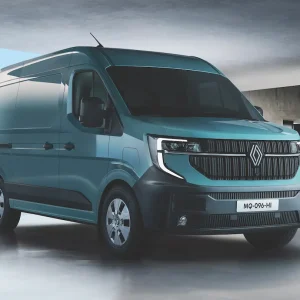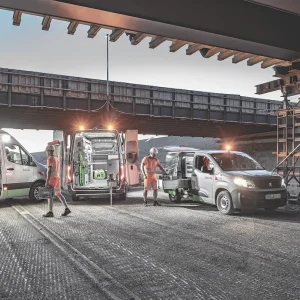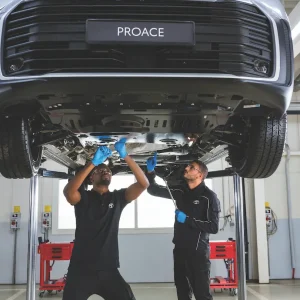No driver or fleet manager wants to deal with problems – especially when they are unexpected. But it’s inevitable, unfortunately, that all fleets encounter some kind of emergency maintenance. The key is how they deal with it to ensure that operations aren’t affected.
In terms of the problems themselves,the RAC says they are pretty common, and relatively easy to deal with and fix. “Like most other vehicles, the biggest problems we see with LCVs tend to be around batteries, tyres and issues with the engine,” a spokesman says.
“From what some of our technicians see, problems could be caused by poorer servicing levels and generally having a harder life than other types of vehicles,” he continues. “Problems can occur when small fleets may not have the capacity to take vehicles off the road for servicing, coupled with the fact that the vehicles they do have cover many more miles.”
The RAC says that it encourages businesses to ensure their vehicles are serviced regularly to prevent some issues – such as tyre deterioration – from becoming a bigger problem in the future. “As well as annual servicing more regular spot checks can help keep on top of any issues and deploying technology such as telematics can give a business much more information about the health of their vehicles and individual components,” he maintains. “This monitoring is particularly important when it comes to batteries, which tend to suffer in the winter.”
As the RAC indicates, tyres feature high on the problem list, but manufacturers are working hard to improve them and ultimately reduce the risk of failure. Hankook is one such manufacturer and while it doesn’t offer any aftersales service, the retailers it uses do. In addition, the company’s technical department – based in Daventry – is available to offer support, advice and guidance to fleets.
“New tyres such as ours are chosen as original equipment on a large number of vehicles for a reason,” explains stephen Marsh, retail development manager at Hankook. “The fact that our tyres are tested and approved for their handling, fuel efficiency, shorter braking, driver comfort, higher mileage and anything that the urban environment throws at them means they make a lot of sense for fleets that are looking to reduce downtime and maintenance costs.”
Some tyre manufacturers offer more than just the rubber. Bridgestone believes it is gaining traction amongst van fleets for its all-encompassing tyre husbandry support service, to supplement its range of premium products.
Other elements have been introduced to complement it, such as the Bridgestone
Partner network of dealer support and Total Tyre Care offering, which provides ‘cradle-to-grave’ support.
“Most large van fleets suffer from tyre damage due to the nature of local delivery. In built-up, urban areas, there’s more potential for damage from mounting kerbs and other related hazards,” comments Bridgestone’s van fleet account manager Ian Baker. “Through our Total Tyre Care provision of tyre support, we provide regular tyre checks and subsequent reports to ensure the fleet has knowledge of every single tyre fitted.”
Baker says Bridgestone is also able to detail tyre removal reasons. “We use this information to look for any patterns in tyre damage and then we can advise how this is caused and what can be done to avoid it in future.
“We also set up monthly fleet inspections to identify sidewall damage that can be turned on rim to maximise tyre life and most importantly, avoid roadside assistance,” he explains. “Van tyre challenges are the same as those in the commercial truck industry but probably more critical, given the expected millage of van tyres versus truck tyre life.”
But tyres are just one of the many issues that vans encounter, explains Kit Wisdom, head of technical services at leasing firm Alphabet. “For a van fleet, anything that takes the vehicle off the road is an emergency. It makes all the difference to be able to manage it effectively, and therefore affects the success of the business,” he says.
There are ways of preparing ahead, but many fleets simply don’t have the resources to deal comfortably with a crisis. “some fleets go to the extent of having vehicles placed around the country, to use as and when one of their standard fleet goes down,” explains Wisdom. “so they have excess vans because they know there are a certain percentage that will always be off the road and they need that contingency in place.
Wisdom suggests that, if they aren’t doing so already, fleet managers need to better understand where their vehicles are. “To better manage downtime they need to find out exactly where the vehicle is and when its unscheduled maintenance is due to be completed,” he says. “It is
also a good idea to know and record the frequency of specific issues. This allows bespoke solutions to be considered, or more training, or extra maintenance on the specific piece of kit that is failing.
Wisdom also states that heavy diesel particulate filter use is another common reason for drivers calling on Alphabet’s services. “A lot of short trips means the filters don’t have
the time to reach the required temperature to operate effectively, which causes unnecessary downtime,” he says. “It is just one issue where vehicles maybe aren’t being selected for their appropriate use. If fleets are continuously finding this problem, maybe a different powertrain is needed – such as an EV–but that may also have an effect on downtime.”
| Top 10 reasons for LCV breakdowns |
|
1. Battery
|
|
2 Wheel change
|
|
3. Engine mechanical
|
|
4. Electrical
|
|
5. Engine management/fuel
6. Clutch
7. Charging
8. Roadside incidents
9. Transmission
10. Brakes |





